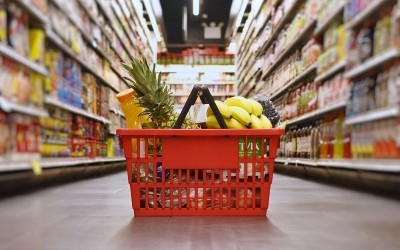C-stores evolve into ‘convenience food plazas,’ channel is ripe for private-label innovation

"C-stores can cater to everybody. C-stores can sell a $2 bag of potato chips, but they can also have a $10 panini. C-stores are making their operations more complex because they are catering to a larger audience. And in this case, they can even bring people that — in normal circumstances — would not enter a c-store," Frossard elaborated.
‘Convenience food plazas’ emerge as a one-stop shop for consumer needs
C-store chains retrofitted and renovated their stores to provide new food experiences, including fresh options like pizzas, salads, breakfast foods and premium coffees, as well as a variety of new on-trend packaged foods, Frossard shared in a recent report.
C-stores offering "enhanced food options" are becoming more prevalent, RaboResearch found. C-stores with enhanced food options account for 58% of total market share for the channel, up from 48% five years ago, according to Earnest Analytics and RaboResearch data.
C-stores embracing more foodservice options are becoming what Frossard calls “convenience food plazas.” Similar to highway food plazas these convenience food plazas “are not just one stop along the way [but] they are also a destination itself” and offer a variety of fresh and packaged products to meet consumer demands, he added.
‘C-stores are providing the environment for experimentation’
C-stores also are experimenting with new CPG products and brands, Frossard noted. Recently, c-store chain Casey’s — known for its fresh pizza— solicited food and beverage brands to apply for its first Innovation Summit through RangeMe, which will take place Oct. 30 in Ankeny, Iowa.
“Traditional c-stores carry national brands, known brands because usually consumers are in a rush. Consumers know exactly what they want. Consumers are not there to read labels. Consumers are not there to peruse aisles,” Frossard explained.
Now, these new c-store formats and layouts are creating spaces where consumers “feel more willing to spend more time there and read labels,” he said.
“It works both ways because c-stores are providing the environment for experimentation, but at the same time, c-stores need experimentation,” Frossard elaborated.
‘In order to have a private-label portfolio, you must have a brand’
C-stores can tap into growing private-label trends with innovative food and beverage launches, but c-stores first must ensure that they have a strong enough brand to do so, Frossard explained.
For instance, c-store chain Buc-ee’s built a brand after its beaver mascot made their stores a destination for travelers, Frossard said. This provided Buc-ee’s an opportunity to expand into private-label with salty snacks, cookies, jerkies, jams and more.
“To have a private label portfolio, you must have a brand. The consumer must trust the retailer. They must trust your brand. There is a c-store here, where I live... that [is just called] ‘Food Store.’ There is no brand. So how can you have a private label portfolio if your establishment does not have a proper brand, or the consumer does not relate to that,” Frossard said.











